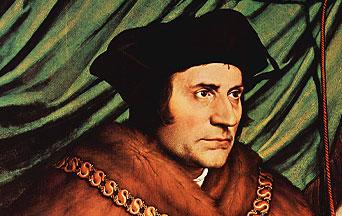
It is astonishing and difficult to understand how a mother can cruelly murder through abortion the child she has conceived. In so doing, she stifles the first and most tangible affection bond between two beings: maternal love, which is present even among irrational animals. Also difficult to understand is how healthcare professionals are willing to cooperate with this odious crime, a willful murder, which is a sin that “rises to heaven and cries out to God for vengeance,” as the Catechism of Saint Pius X teaches.
On maternal love, the Prophet Isaias (49, 15) says: “Can a woman forget her infant, so as not to have pity on the son of her womb?” This forgetting happens with procured abortion.
A crucial part of the debate involves many politicians who call themselves Catholic and yet go along with abortion to be “politically correct.” They claim they must represent all their voters rather than vote according to their personal beliefs.
Two high-ranking Democratic Party members, President Joe Biden and Nancy Pelosi, present themselves as practicing Catholics, yet support abortion, thus defying Church teaching.
Journalist John Davis refutes this conflicting claim in an interesting article in the Seattle Catholic.1 He cites Saint Thomas More as an example of the consistency politicians should have between politics and Faith. More was England’s great chancellor at the time of the lustful King Henry VIII.
Eternal and Natural Law: The Foundation of Morals and Law
Who was this saint who preferred martyrdom over violating Church laws in the face of royal power?
Briefly, Saint Thomas was born in 1478 on the outskirts of London. At just 13 years old, he took a job as a messenger for the archbishop of Canterbury. Noticing his remarkable intelligence, the prelate financed his studies at the University of Oxford, where Thomas obtained a law doctorate at age 22.
He thought about entering religion but later chose the path of marriage. He had four children.
With a strong avocation for politics and literature, Sir Thomas More held several positions as a man of law. He gradually became known for his fine intelligence, honesty, integrity and above all, his great Faith and charity, balanced by a keen sense of humor. These qualities made him much loved and famous. This fame led Henry VIII to choose him for the kingdom’s most important post: lord chancellor, which he held from 1529 to 1532, the year of his death.
John Davis writes: “As a Knight and member of the King’s Council in 1527, More faced his own moral dilemma. King Henry VIII desperately wanted the highly regarded Sir Thomas’s support for his appeal to the Pope to grant him a divorce from Katherine of Aragon so he could marry his mistress Anne Boleyn. A fervent Catholic, More refused to give his support based on the Church’s teaching of the indissolubility of marriage.”
 Learn All About the Prophecies of Our Lady of Good Success About Our Times
Learn All About the Prophecies of Our Lady of Good Success About Our Times
Mr. Davis cites the 1966 movie, A Man For All Seasons, in which Sir Thomas, played by Paul Scofield, is drilled by Cardinal Wolsey (Orson Welles) regarding his lack of support for the king’s divorce: “Explain how you, as a councilor of England, can obstruct these measures for the sake of your own private conscience?”
More responds to Wolsey point-blank: “I think that when statesmen forsake their own private conscience for the sake of their public duties, they lead their country by a short route to chaos.”
Sir Thomas More was found guilty of high treason for opposing the king’s wishes. He was imprisoned in the Tower of London and beheaded on July 6, 1535. He refused to recognize the king as the self-proclaimed supreme head of the Church in England.
At the moment of his death, the martyr declared: “Be my witnesses that I die in and for the Faith of the Church of Rome. I die the king’s good servant, but God’s first. Pray to God that He may enlighten and advise the king.”
Given his death in defense of the Faith, Pope Leo XIII declared Sir Thomas More a martyr and beatified him in 1886. On May 19, 1935, Pius XI canonized him with Saint John Fisher, also considered a martyr.
Science Confirms: Angels Took the House of Our Lady of Nazareth to Loreto
On October 31, 2000, John Paul II proclaimed Saint Thomas More “patron of government officials and politicians.” In his apostolic letter on that occasion,2
John Paul II highlighted the need for a patron saint when “scientific achievements in the area of biotechnology underline the need to defend human life at all its different stages.” He adds that Saint Thomas More provides such a model: “Whenever men or women heed the call of truth, their conscience then guides their actions reliably towards good. Because of the witness he bore, even at the price of his life, to the primacy of truth over power, Saint Thomas More is venerated as an imperishable example of moral integrity. And even outside the Church, particularly among those responsible for the destinies of peoples, he is acknowledged as a source of inspiration for a political system which has as its supreme goal the service of the human person.”
Applying this doctrine to present-day politicians, John Davis writes, “Clearly these Catholic politicians have elevated the goal of getting elected above their solemn duty to defend the Faith and the most vulnerable in society. The Catechism of the Catholic Church states: “God, the Lord of life, has entrusted to men the noble mission of safeguarding life, and men must carry it out in a manner worthy of themselves. Life must be protected with the utmost care from the moment of conception: abortion and infanticide are abominable crimes.”3

